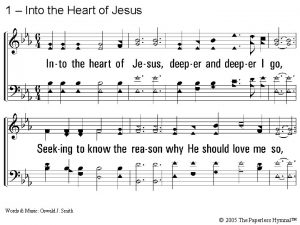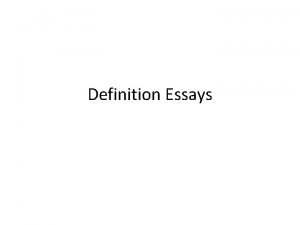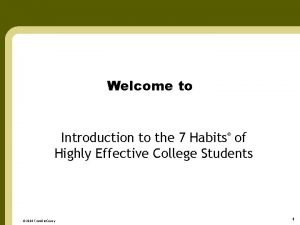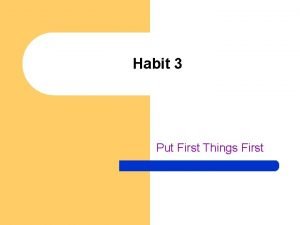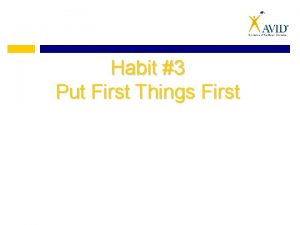Exercise 15 5 A Deeper Dive First things












- Slides: 12

Exercise 15. 5 A Deeper Dive

First things first • Vowels are harder than consonants • We don’t have all the information we would need to arrive at confident solutions • The following is perhaps a bit of information overload: just take it one step at a time. As you work thru it, keep your finger in Fortson and a browser on Wiktionary and wikipedia and verify everything, so you really understand. • Even if we can’t be confident about every solution, that doesn’t mean we can’t learn and see what we can do. In fact, entirely the opposite: hard problems are great opportunities to learn and explore. • So, let’s see what we’re dealing with …

15. 5 a • ’leech’ is from OE lǣċe, which Wiktionary says is from Proto-Germanic *lēkijaz. • Cognate with Old Frisian lētza, Old Saxon lāki, Old High German lāhhi, Old Norse *lækir (Danish læge), Gothic ������ (lēkeis) • From Wikipedia PGmc Phonology article: “all provable instances of inherited (PIE) * ē (PGmc. *ē₁) are distributed in Gothic as ē and the other Germanic languages as *ā” • • • So it looks as if that long ē in *lēkijaz is a long ā in a couple cognates (Old Saxon and OHG and ON) and a long ē in Gothic. Maybe it goes back to a PIE long *ē So Wikipedia says it is borrowed into OE from Oirish liaig and it seems to come from an original long ē. Oxford English Dictionary (OED) says *lēkijaz comes from < PIE *lēgio-s and Old Irish liaig is “apparently related in some way. ” So the OED seems to confirm that the long ē is PIE and it looks like a long e grade of *leg-: SO WE HAVE AN ANSWER But the Wiktionary Index of PIE roots lists *leg- and *lēgio-s as separate roots: https: //en. wiktionary. org/wiki/Index: Proto-Indo. European/l • Fortson tells us it comes from *leg- “collect, gather” (which is the same as is found later in ‘logic’ and ‘logos’ and ‘legend’) • So, in the end, we’ve traced it as far as we can, we’re pretty sure it’s an e-grade originally, but we can’t make the connection Fortson suggests between *leg- and lǣċe • That doesn’t mean he’s wrong: it means he’s got a hypothesis he believes. • Vowels are messy.

15. 5 b *lendh- ‘land’: OE land • Grimm III explains that *dh > Gmc d • The resonant *l stays the same from PIE to PGmc, says 15. 13, and the OE section says nothing about changes to resonants. • So only the vowel is left to explain. • 15. 14 says that *o and *a merged into PGmc *a, and 15. 60 says that *a became fronted to ae in Old English except before nasals! (n is a nasal), so the *a stayed the same from PGmc to OE, and we’re done!

15 c *wes ‘to put on clothes’: OE werian (English ‘wear’) • The glide *w stays the same throughout. • The *s changes to r: how/why? • 15. 8 tells us that Verner’s law applied to *s, which became voiced PGmc *z • But *wes- itself doesn’t give us an environment for Verner’s law, which applies to consonants not after a stressed syllable. • Wiktionary to the rescue: they say that wear < OE werian < PIE *woséyeti, from *wes • In other words, this is a causal verb from *wes- and if you remember the causals in 5. 35, they are formed on the o-grade of the root plus a stressed suffix *-éye • Note that the *s in *woséyeti is not after the stressed syllable, and so Verner’s law applies and it changes to PGmc *z • 15. 50 tells us that *z was rhotacized to r in West Gmc, which includes OE • So far, so good, but what about the vowel? Next page…

The vowel in werian • Fortson says that for the purposes of this exercise, any Gmc *e would go to i (15. 15 says the same) so PIE *e is not where the e in werian came from. • Colton tells me that leaves the “PIE *o > *a > e when followed by j or I” change as the only way to get a short e in OE” • A little digging on Wikipedia “Germanic Umlaut” finds the following, which confirms Colton’s astute observation: • The phonologically expected umlaut of /a/ is /æ/. However, in many cases /e/ appears. Most /a/ in Old English stem from earlier /æ/ because of a change called a-restoration. This change was blocked when /i/ or /j/ followed, leaving /æ/, which subsequently mutated to /e/. For example, in the case of talu "tale" vs. tellan "to tell", the forms at one point in the early history of Old English were *tælu and *tælljan, respectively. Arestoration converted *tælu to talu, but left *tælljan alone, and it subsequently evolved to tellan by imutation. The same process "should" have led to *becþ instead of bæcþ. That is, the early forms were *bæcan and *bæciþ. A-restoration converted *bæcan to bacan but left alone *bæciþ, which would normally have evolved by umlaut to *becþ. In this case, however, once a-restoration took effect, *bæciþ was modified to *baciþ by analogy with bacan, and then later umlauted to bæcþ. • So the key here was to observer that i in werian as part of the environment. Remember that for 15. 5 f

15. 5 d *dhreibh- ‘drive, push’: OE drift • Wiktionary gives us a bit more detail: *dhreibh- > PGmc *driftiz > OE drift • Grimm III gives us the first consonant: PIE *dh > PGmc *d as the first consonant • Second phoneme, resonant *r, stays the same. • The vowel: *ei is a diphthong in PIE, but Fortson doesn’t cover that diphthong in this chapter. • Wiktionary, however, in ‘Proto-Germanic Language’ says: “Note the change /e/ > /i/ before /i/ or /j/ in the same or following syllable. This removed /ei/ (which became /iː/) but created /iu/ from earlier /eu/. ’ • Is that we’re dealing with? The stage PGmc *driftiz suggests that it is, because it fits: there’s an /i/ in the following syllable. So that suggests that the change from PIE *ei to PGmc *i was a regular change. And that’s the answer to this exercise: it’s from an e-grade root. • Because I’m curious, let’s figure out the rest: just skip this if you don’t have time. • Wiktionary “PGmc *driftiz” gives us “From *drībaną +*-þiz. “ So we’re dealing with a verb plus a suffix • The verb base: • • The suffix • • *drībaną : this is the root of English ‘drive’ and gives us a voiced labial b: see below for why this changes to f. is from PIE *-tis, which is used to form nouns from verbal roots (Fortson § 6. 42: it’s the same as –sis in ‘analysis’ and ‘basis’ and many other words. Grimm I changes PIE *-tis to PGmc *-þiz. 15. 50 tells us the final *z drops out by the time we get to Old English ‘drift’ The *b-tis > OE –ft • • • 15. 7 tells us that only the first of two voiceless stops undergoes change, but that applies to voiceless stops, whereas here we have a voiced b + voiceless t. On the other hand, we find a parallel in ‘daft’, from *daftuz (“appropriate, apt, convenient, suitable; decent; accommodating, agreeable”), ultimately from Proto-Indo-European *dʰh₂ebʰAnd another parallel in ‘swift, ’ from Proto-Germanic *swībaną , so even if we can’t find this piece explicitly in Fortson, we can have a good stab at it.

5. 15 e *reǵ- ‘to direct’: OE riht ‘right’ (modern English right • Wiktionary is a treasure-trove on ‘right’: “from Proto-Germanic *rehtaz (“right, direct”), from Proto-Indo-European *h₃reǵtós (“having moved in a straight line”), from Proto-Indo-European *h₃reǵ- (“to straighten, direct”). An Indo-European past participle, it became a Germanic adjective which has been used also as a noun since the common Germanic period. ” Clearly the word-initial laryngeal h₃ dropped out, as 15. 12 confirms. • 15. 15 tells us that PIE *e tended to change to PGmc *i, which agrees with the Wiktionary analysis. • And we’re done: it’s from an e-grade of *h₃reǵ- / *reǵ- (Fortson probably left off the laryngeal just because it disappeared without a trace in Gmc).

15. 5. f *reǵ- ‘to direct’: OE gerecenian ‘arrange’ • The ‘hint’ that pre-OE (which is also known as PGmc) would have been *gerecinian is important because it tells us that there was an *i in that 3 rd syllable. • But the reasoning is a bit circular: he reason for an i is at least partly to explain the change we are trying to explain. • Go back a few slides to the one about “the vowel in werian. ” The same reasoning applies here, since we know that the path is PGmc *gerecinian > OE gerecenian, which means that it was an o-stem ge-roc-inian. • BTW, the ‘ge-’ prefix so common in OE seems to me often to mean nothing at all and to be added or not added to OE verbs often for no particular reason: Wiktionary confirms that: it explains that ge- ‘Forms perfective verbs from other verbs with a sense of completeness, or simply as an intensifier. ’

15. 5 g *dhers- ‘dare’: OE 3 rd sg. durst • This one is a puzzler, and Colton and I can’t solve it with confidence. • Wiktionary and OED (Oxf. Engl. Dictionary) call it a ‘preterite-present’ (15. 32) which means that its present forms are identical to those of a strong verb’s preterite forms. Both sources give the full conjugation. • Although there is evidence for other forms provided by the OED (more on that in a sec), I also find that it is said in Old English to have belonged “originally to the third ablaut series ders- , dars- , durs-” and also it is said that ” The original 3 rd singular present he dare, and past tense durst, remained undisturbed to the modern period. ” • So durst looks like it might be 3 rd sg. past tense. • 15. 25 says that the preterite (past tense) was generally formed from the PIE perfect (which would be *dhedhors-), but without reduplication. • So that makes it *dhors-, which after Grimm III turns into PGmc *dors-, which fits the reported form in the OED (which says the form is durst, but reports actual quotations only as dorste: not sure what to make of that). • All of that is enough to make a very good educated guess that it was an o–grade ablaut.

15. 5 h *rewdh- ‘to clear land’: OE rodd ’stick’ • Now that’s a rather big shift in meaning. • This etymology is not accepted as certain by everyone (the OED, for example, does not endorse it). • In the instructions, Fortson tells us that Gmc. *-u- > OE –o-, and at 15. 61 that *eu > eo (long e short o). • So we could say that rodd comes from the e-grade *rewdh • Why, however, couldn’t it come from *rowdh-, the o-grade? Not sure. • Grimm III gives us *dh > PGmc d, but what happens to the vowel eo and why are there two d’s as the final consonants instead of one? I don’t have an answer, but I’m curious.

15. 5 i *nem- ‘to take’: OE numen ‘seized’ • From Wiktionary: OE niman < proto-Germanic *nemana < PIE *ném-e-ti (thematic root present) • Fortson, at 15. 13, says that syllabic resonants developed a –u- in front of them and gives this very OE past participle as an example: • “*nm(m)-ono- ‘taken’ > Gmc. *numana- > OE numen > English numb” (the b is added analogically to words like thumb, I think). • Once you find that at 15. 13, it’s clear what Fortson thinks the answer is: numen is from a zero-grade *nm(m)-ono • SO that’s that, but Colton points out that Fortson’s answer seems to rely on Lindeman’s/Edgerton’s extension of Siever’s law, but that extension is not supported by very many experts and seems to be rejected by the most recent ones. • An alternative is that the reconstructed typical pattern of a Gmc past participle with a –u- in the root kept the u in this case. • Apparently niman is classified as a class 4 OE verb (from OED and Wiktionary, I think) • In class 3 and the past participle of class 4, there were PIE syllabic resonants which developed in Germanic to u plus resonant; thus u became the Germanic sign of these parts. • I’m not sure whether that’s a remnant of Lindeman/Edgerton and is now considered obsolete, but it does look like a good answer here. • Basically, for our purposes, we’ve got Fortson’s answer, but we also have a healthy reminder that this field still has many areas where experts disagree. That’s not bad, just confusing to newbies. (and kind of exciting? )
 Dive deep synonyms
Dive deep synonyms Into the heart of jesus deeper and deeper i go
Into the heart of jesus deeper and deeper i go Maturity continuum model victories by stephen
Maturity continuum model victories by stephen Put first things first activities
Put first things first activities Habit 3 put first things first
Habit 3 put first things first Put first things first definition
Put first things first definition Franklin covey maturity continuum
Franklin covey maturity continuum Habit number 3
Habit number 3 Put first things first video
Put first things first video Habit 3 activities
Habit 3 activities 7 habits promise
7 habits promise Glycolyaia
Glycolyaia Nitrox mod table
Nitrox mod table

